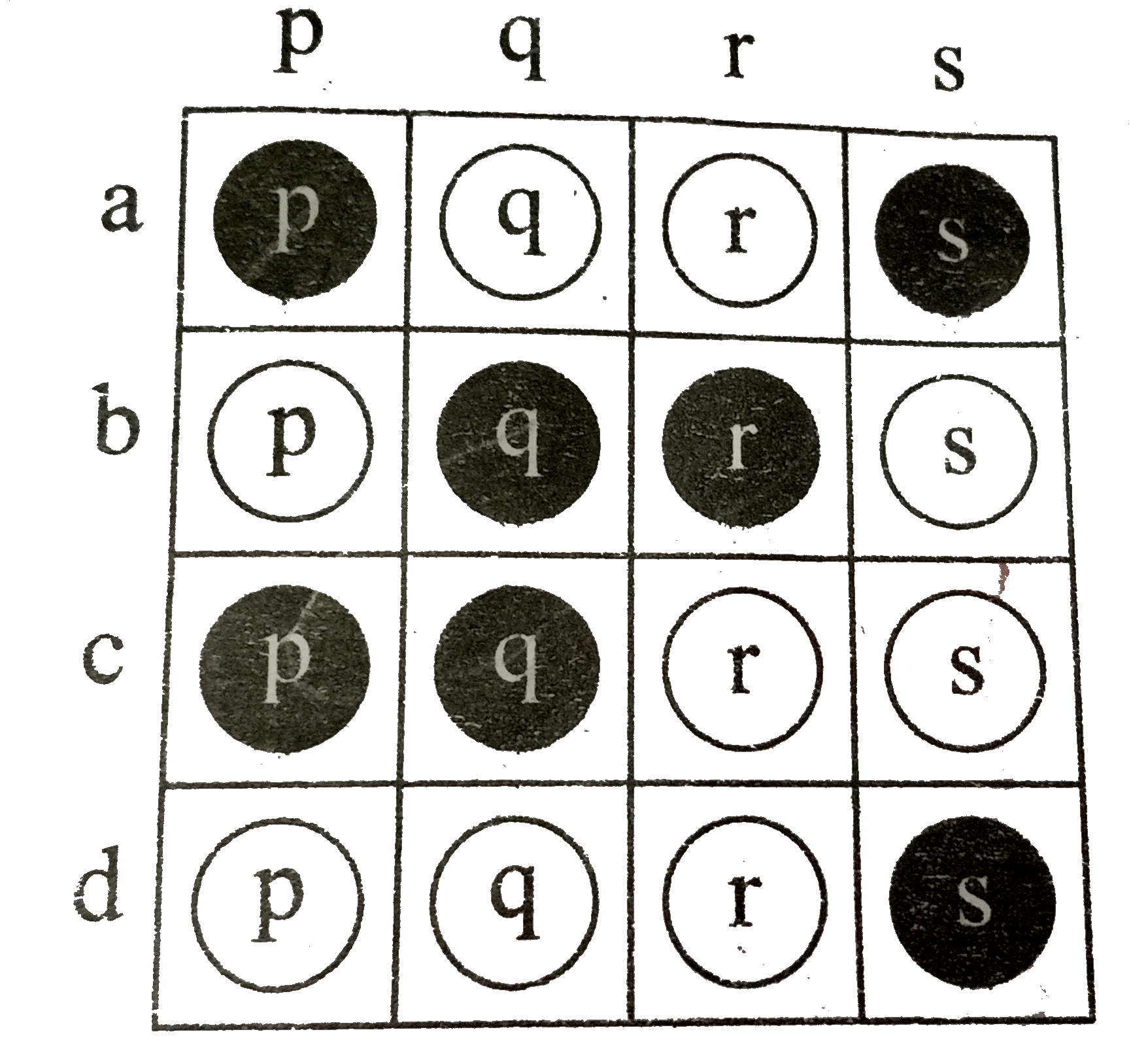Match column - I with column -II
Column -IColumn -II(a)Gravitational force(p)Central(b)Viscous force(q) Non-conservative(c)Electric force(r) Conservative(d)Friction(s) Mechanical energy is conserved
The correct Answer is:a→p,r,s;b→q;c→p,r,s;d→q
Topper's Solved these Questions
- FORCE AND NEWTONS LAWS OF MOTIONBOOK - GRB PUBLICATIONCHAPTER - FORCE AND NEWTONS LAWS OF MOTIONEXERCISE - Integer question
15 Videos
- FORCE AND NEWTONS LAWS OF MOTIONBOOK - GRB PUBLICATIONCHAPTER - FORCE AND NEWTONS LAWS OF MOTIONEXERCISE - Comprehension
12 Videos
- FORCE AND NEWTONS LAWS OF MOTIONBOOK - GRB PUBLICATIONCHAPTER - FORCE AND NEWTONS LAWS OF MOTIONEXERCISE - Assertion- Reason
4 Videos
- BASIC MATHEMATICSBOOK - GRB PUBLICATIONCHAPTER - BASIC MATHEMATICSEXERCISE - Problems For Practice
35 Videos
- FRICTION AND CIRCULAR MOTION BOOK - GRB PUBLICATIONCHAPTER - FRICTION AND CIRCULAR MOTION EXERCISE - Comprehension type
11 Videos
Similar Questions

Q. Match the column-I with Column-II
 .
.
View SolutionMatch the quantity of Column I with the quantity of Column II
Column IColumn II(A)Glycine(p)Has S-S linkage(B)Arginine(q)Optically active(C)Glutamic acid(r)Has pH less than 7(D)Cystine(s)Has pH greater 7
View SolutionMatch the following :
Column-I Column-II(A)Work done by all the forces(P)Change in potential energy(B)Work done by conservative forces(Q) Change in kinetic energy(C)Work done by external forces(R) Change in mechanical energy(S) None
View SolutionMatch the column-I with column-II
Column_IColumn-II(i)Equilibrium(a)ΔG=+ve(ii)Spontaneous reaction(b)ΔG=0(iii)Non-spontaneous reaction(c)ΔG=−ve
View Solution[B] Match the solutions in Column-I with their nature in Column-II :
Column-IColumn-II(a)Benzene + toluene(p)Non-ideal solution(b)Ethanol + water(q)Ideal solution(c)Benzene + chloroform(r)ΔHmix>0(d)Carbon tetrachloride + chloroform(s)ΔHmixing=0
View SolutionColumn IColumn II(a)Work(p)Metre(b)Force(q)Joule(c)Displacement(r)Metre/second2(d)Acceleration due to gravity(s)Newton
View SolutionMatch the term given in column I with its description in Column II
Column I Column II(a)Path function (p)Heat(b)State function (q)Internal energy (c)Intensive property(r)Entropy(d)Extensive property (s)Specific heat
View SolutionMatch the statements in Column I labeled as (a), (b), (c ), and (d) with those in Column II labeled as (p), (q), (r ), and (s). Any given statement in Column I can have correct matching with one or more statements in Column II.
An electron in hydrogen atom moves from n=1 to n=2.
Column IColumn II(a) Angular momentum(p) One-forth times(b) Kinetic energy(q) Two times(c) Potential energy(r) Four times(d) Mechanical energy(s) Half times
View SolutionMatch the appropriate Column I with Column II.
Column IColumn II(A) Same dimension of mass(P) electric charge(B) Negative dimension of mass(Q) electric potential(C) Zero dimension of mass(R) electric capacity(D) Dimension of length is±D(S) energy density
View SolutionColumn IColumn II(a)Electric Generator(p)Electric to Mechanical(b)Electric Motor(q)Electric to Heat(c)Burning(r)Mechanical to Electric(d)Hair dryer(s)Chemical to Heat
View Solution
